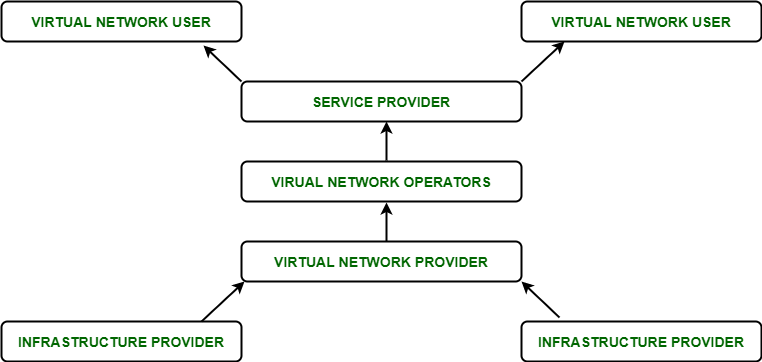Virtualization
Virtualization is a technology that allows you to create multiple virtual instances of a physical computer or server, each of which operates as an independent virtual machine (VM). These virtual machines can run their own operating systems and applications, effectively partitioning the physical hardware into multiple isolated environments.

Server Virtualization
Server virtualization enables multiple operating systems to run on a single physical server as highly efficient virtual machines. Key benefits include:
- Greater IT efficiencies
- Reduced operating costs
- Faster workload deployment
- Increased application performance
- Higher server availability
- Eliminated server sprawl and complexity
Network Virtualization
By completely reproducing a physical network,allows applications to run on a virtual network as if they were running on a physical network — but with greater operational benefits and all the hardware independencies of virtualization. presents logical networking devices and services — logical ports, switches, routers, firewalls, load balancers, VPNs and more — to connected workloads.)

Benefits of Virtualization

Reduced capital and operating costs.

Minimized or eliminated downtime.

Increased IT productivity, efficiency, agility and responsiveness.
Faster provisioning of applications and resources.

Availability of a true Software-Defined Data Center.

Simplified data center management.
Benefits of virtualization include improved resource utilization, cost savings, increased flexibility, and enhanced disaster recovery capabilities. It's widely used in data centers, cloud computing environments, and for development and testing purposes. Virtualization has become a cornerstone of modern IT infrastructure, enabling more efficient and scalable computing environments.
Virtualization in networking refers to the process of creating a virtual network infrastructure that can run on top of physical network hardware. This virtualization can be achieved in several ways, including network virtualization, software-defined networking (SDN), and network functions virtualization (NFV). Network virtualization involves creating multiple logical networks on top of a physical network infrastructure. This enables network administrators to partition the network into multiple virtual networks, each with its own routing, security, and quality-of-service policies. Network virtualization can be achieved using techniques such as VLANs, VPNs, and virtual switches. SDN is a network architecture that separates the control plane from the data plane, allowing network administrators to centrally manage and configure the network. This enables network administrators to dynamically control traffic flow, manage network policies, and optimize network performance. SDN is achieved using a controller that communicates with network devices to configure network policies. NFV is a network architecture that virtualizes network functions such as firewalls, load balancers, and routers. This enables network administrators to deploy these network functions as software applications running on virtual machines instead of dedicated hardware devices. NFV can be used to reduce the cost and complexity of network infrastructure, improve network agility, and enable rapid deployment of new network services.Overall, virtualization in networking can provide significant benefits in terms of flexibility, scalability, and cost savings. By creating a virtual network infrastructure, network administrators can more easily manage and configure the network, and deploy new services more quickly and efficiently. Virtualization in networking refers to the use of software to create multiple virtual instances of networking components, such as switches, routers, firewalls, and servers. These virtual components can then be used to create virtual networks, which can be isolated from each other and from the physical network. One of the main benefits of virtualization in networking is that it allows for greater flexibility and agility in the deployment and management of networks. Virtual networks can be easily provisioned, scaled, and managed, without the need for physical hardware. Another benefit of virtualization in networking is that it enables the consolidation of multiple physical network components onto a single physical server. This can help to reduce costs and simplify network management. There are several different approaches to virtualization in networking, including network function virtualization (NFV), software-defined networking (SDN), and network virtualization. Each of these approaches has its own strengths and weaknesses, and the choice of approach will depend on the specific requirements of the network being virtualized.
